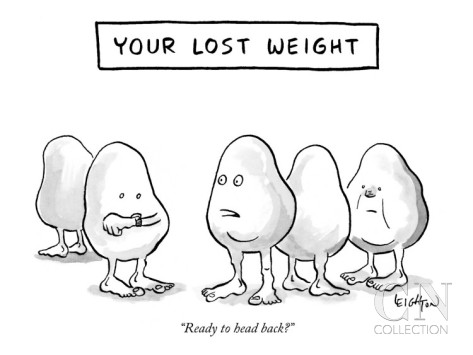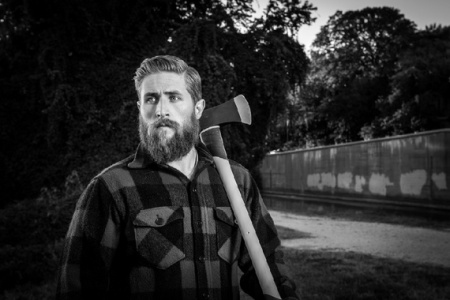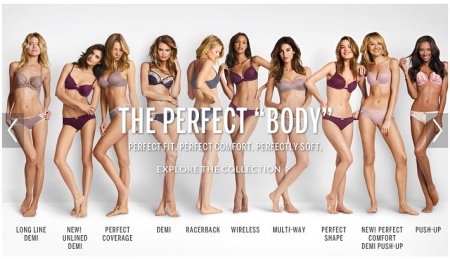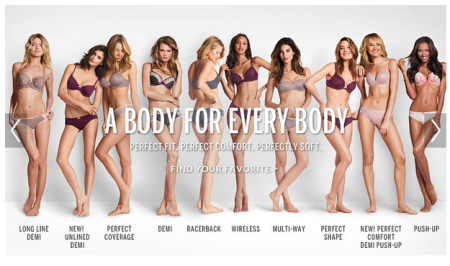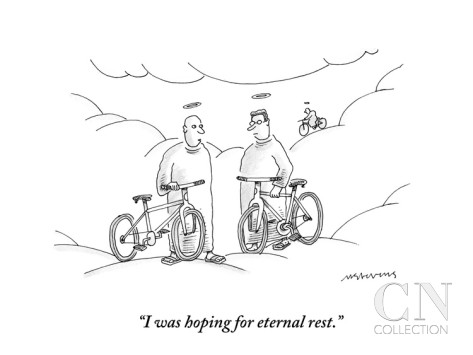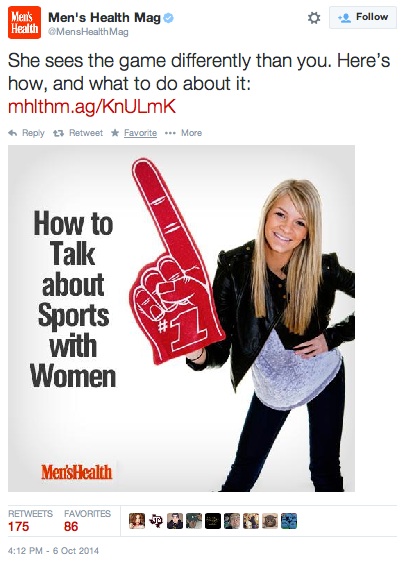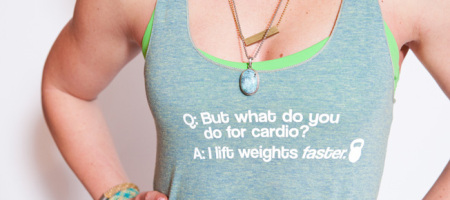
Jen Sinkler prefers actively planning her lifting routines to incorporate cardio conditioning, rather than splitting out cardio and lifting, and she has developed a host of circuits to help others get this all-around benefit, too. Similarly, cardio athletes (like me!) who choose heavily resistance-oriented sports like rowing and swimming combine our enjoyment of cardio with a great full-body strength workout.
Please stop saying “No cardio, just lifting!”
Trainers who focus on resistance training like to use this as a sales pitch. Sometimes they even claim that cardio is harmful, but the more honest among them simply say, hey, cardio is not for everyone (and I’ll get to that later), so we’re just going to lift, because it’s just as good.
Here is the reality: when lifting is just as good as “cardio” for overall health, it’s because it includes cardio.
A good cardio (aerobic) base is, like a good strength base, essential to good human health. Both contribute to various aspects of health: respiratory health, hormonal balance, blood sugar stability, sleep regulation, bone density, mood regulation, and of course heart health — because who cares how good your nutrition is if your heart can’t pump the nutrients through your body?
How do you know you’re doing cardio? Listen to your heart. The aerobic exercise “zone” is estimated to be about 75% of your maximum heart rate, so roughly 140ish for many people. That’s a good place to be for healthful exercise, and roughly the level of effort where you can pass “the talk test” — have a conversation while exercising. You also get health benefit from any level of exercise around 100 heartbeats per minute or more. So wear a heart rate monitor and see what your average heart rate is during an activity you like to do for a half hour or so — like walking or a weights session at the gym. If it averages over 100, you’re doing cardio.
Some trainers will say, “I’m not talking about that! I’m talking about endless hours on the treadmill or elliptical! That’s cardio!” Look, I get it — you don’t enjoy that. I don’t either, for what it’s worth. But you don’t get to make a pile of things you don’t enjoy and call it “cardio.” Because cardio already means something. And not what its detractors say it means — which generally boils down to ineffective training combined with poor nutrition.
Triathletes and ultra-distance athletes, the ultimate cardio athletes, don’t just lean on treadmill rails for a half hour, read the machine’s calories-burned count, and go to Starbucks. And, no matter how much (or little) time you spend on exercise, neither should you. Mix it up — alternate a little faster and a little slower — and use your balance. Try different machines, if you like machines, or walk more during the day. Take a strength-training class. Heck, do a little bit of all of it. If you’re not a competitive athlete, the exact workout you do is much less important than being active — regularly — and being attentive to what you’re doing while you’re exercising. And eat right — that means protein, vitamin-rich foods, and enough. Undereating just leaves you run down, and tears down the important tissues you need for health.
Here are some examples of cardio:
- Running
- Swimming
- Cycling
- Rowing (sport or just in a rowboat)
- Dancing
- Walking
- Climbing stairs
- Flipping tires
- Martial arts, from fencing to MMA
- Gardening
- A brisk lifting session in any strength disclipine
- Yoga
- Scrubbing floors
- Shoveling snow
- Calisthenics
- Sled drags and sled pushes
- Hiking
- Canoeing
- Skate-, surf-, snow-, or wakeboarding
- Table tennis
- Volleyball
- Badminton
Don’t like running? Don’t run. Hate the elliptical? Don’t even look at it. Hate cardio? I doubt it. Almost every person I’ve heard say they “hate cardio” has also said — sometimes in the very same breath — that they love a good hard workout. And that’s cardio.
There is one thing that the more traditional cardio activities will do much better than just lifting weights faster (or with better management of rests), and that’s make you good at cardio activities. You won’t come away with from a brisk, athletic lifting-only program being able to run a fast mile or run for a half an hour straight. (Same way doing some basic strength training won’t turn you into a powerlifter.) This seems like a non-issue to me, but you will hear a lot of people list benchmarks like that as “what it means to be fit.” They’re wrong, too. That’s a particular form of performance, but basic fitness is really basic, and is not really defined by numbers of pushups, percent of bodyweight lifted on a barbell, or 3-mi run time. Advanced fitness is like any other kind of advanced example of something that fits well or is fitting: dependent on the context.
Basic strength and basic cardio conditioning are a foundation for health and for training performance, and it’s OK to prefer one and be “just OK” at the other. I sometimes wonder if that’s part of the sticking point for “no cardio, just lifting!” advocates — so many of them act as if every exercise has to count and has to be focused on a goal of excellence or at least progress, and they can’t tolerate the idea of doing something they aren’t good at and don’t want to take the time to be good at. So I’d like to offer another piece of advice that has been helpful to people training athletics for ages: leave your ego at the door.
It’s OK to have fun. It’s OK to do stuff you’re not great at. It’s important to eat your vegetables, and it’s even better if you can find vegetables — or recipes for them — that you really, deeply enjoy.
So how about a new pitch? One that has the advantage of reassuring people interested in strength training, that is not actually insulting to perfectly enjoyable other sports, and that, you know, describes what you’re offering? Get a great full-body workout with barbells! Or kettlebells, or whatever. It’s not that hard to just sell what you’re selling — instead of going out of your way to tear down something else.
